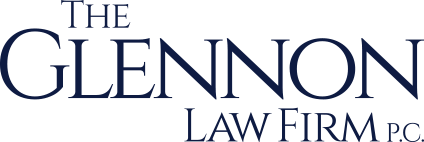Navigating the complex waters of judgment enforcement is crucial for professionals, executives, and small business owners. Understanding the strategic considerations and enforcement tools at the onset of any dispute can significantly impact the ability to collect monetary awards successfully. This article delves into the essentials of judgment enforcement, outlining what every business leader should know to prepare effectively and utilize the available tools to ensure they receive what they are owed.
Initial Considerations Before Litigation
Before engaging in litigation, it is critical to assess several factors. These include the merits of the case, procedural requirements, and the specific strategic concerns unique to the situation. A crucial aspect of this preliminary analysis involves evaluating the likelihood of successfully collecting a judgment, should one be awarded. This step is vital because, without a clear path to collection, the resources invested in litigation might yield little or no return.
Potential litigants must consider the financial stability and structure of the opposing party, the location and liquidity of their assets, and their history regarding compliance with judgments. In complex cases, it may be necessary to engage legal counsel and a specialized investigative firm to thoroughly examine these elements. Ignoring these considerations, especially evident red flags like potential insolvency, could lead to futile litigation efforts.
Tools for Securing and Enforcing Judgments
Once a judgment has been secured, the challenge often begins: collection. In jurisdictions like New York, the law provides a robust toolkit for this phase. Key among these tools is the restraining notice, as detailed in the Civil Practice Law and Rules (CPLR) Section 5222. This powerful instrument can be served on the judgment debtor or third parties who owe a debt to or possess assets of the debtor. It effectively prohibits any disposal or interference with the debtor's property, operating broadly to freeze assets until further legal action can dictate otherwise.
The restraining notice does not require prior judicial approval, allowing for swift action to prevent the dissipation of assets. Its violation can lead to serious consequences, including contempt charges, which might involve fines or even imprisonment.
Another critical tool is the turnover order, under CPLR Sections 5225 and 5227, which compels the surrender of personal property from the debtor or third parties. These orders can extend even to out-of-state assets if the court has personal jurisdiction over the debtor, significantly broadening the scope of potential recovery.
Execution and Post-Judgment Discovery
Beyond restraining notices and turnover orders, judgment creditors have the authority to directly execute a debtor’s assets through the sheriff or other designated officers, per CPLR Section 5230. This direct execution can apply to personal and real property, and even wages, ensuring that creditors have a pathway to recover debts owed.
Additionally, New York law facilitates post-judgment discovery, allowing creditors to issue subpoenas for information and documents not only from the debtor but also from third parties. This process is essential for uncovering hidden assets or understanding the debtor’s financial ecosystem, which can lead to discovering additional recoverable assets.
Real-World Implications and Considerations
The practical application of these tools can be seen in various cases where judicious use of restraining notices and discovery processes has led to significant recoveries. For example, in one case, extensive post-judgment discovery and the strategic use of restraining notices applied pressure on a debtor, leading to compliance with the court’s orders under the threat of incarceration.
In another instance, following a substantial judgment, the issuing of a restraining notice to a debtor's banks quickly secured assets that would otherwise have been dissipated, leading to successful collection efforts.
Conclusion
For professionals, executives, and small business owners, understanding and preparing for judgment enforcement at the beginning of a dispute is as crucial as winning the case itself. By familiarizing themselves with the tools available and considering strategic approaches to potential litigation, business leaders can ensure that they not only win their cases but also successfully collect what is rightfully owed to them. This proactive approach minimizes financial risks and maximizes the chances of a favorable outcome in any litigation endeavor.
If you have been subpoenaed or are facing judgement in a Business Litigation, Employment Law, Trust & Estate Litigation, or Matrimonial Law, and have questions We have many years of experience handling such matters and will be able to assist you in resolving the dispute. .
You may learn more about us and how we operate by visiting these pages: About Us, What Sets Us Apart, and Learn More About Us.



